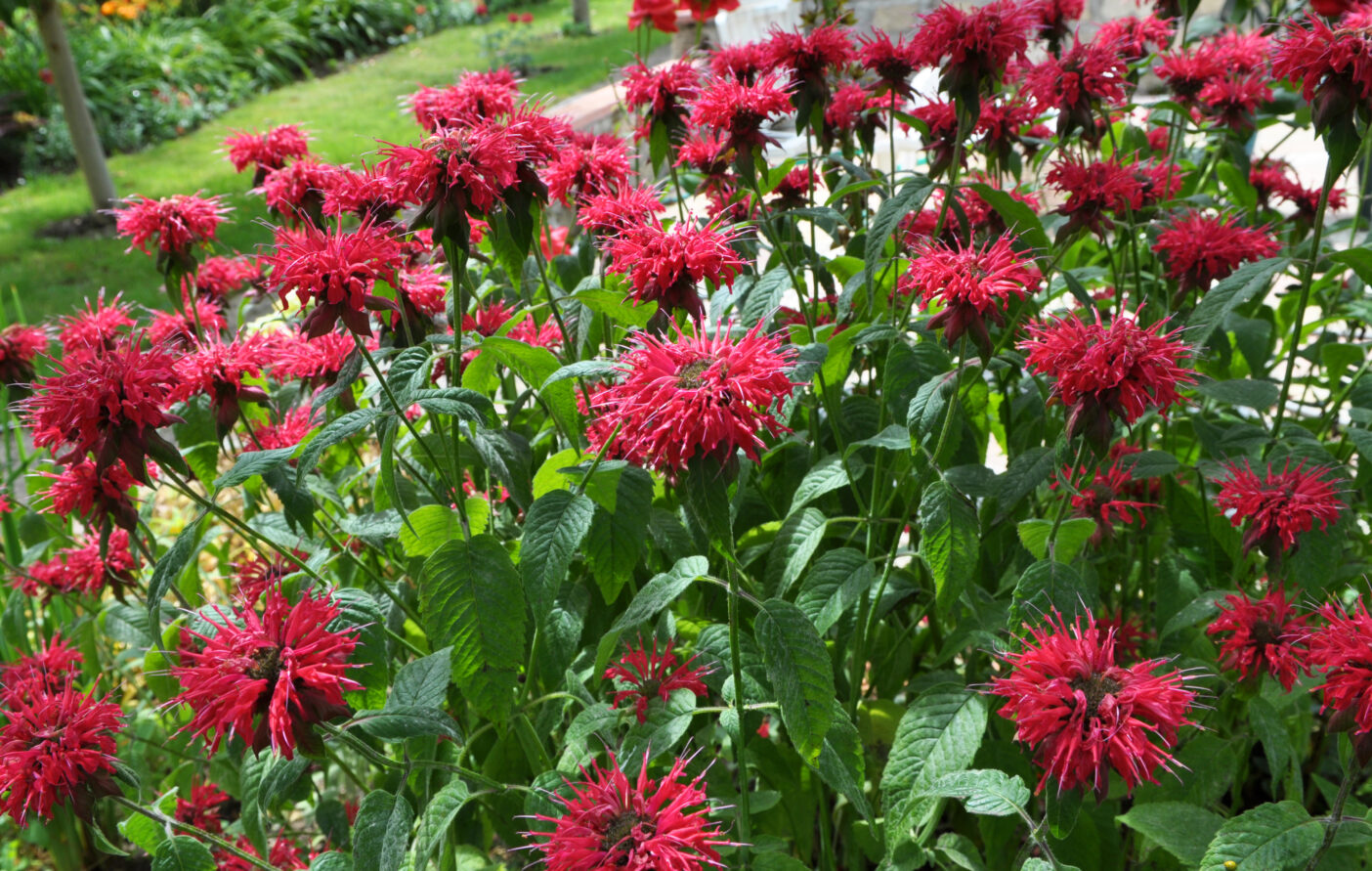bee balm

Introduction
Bee balm, also known as Monarda didyma or scarlet monarda, is a versatile plant that is becoming increasingly important in the cosmetics industry. In this article, we will look at the botanical origin of bee balm, the active ingredients it contains and its physical and chemical properties. We will also explain the effectiveness of bee balm and the importance of melanocytes for skin health.
Botanical origin of bee balm
Bee balm (Monarda didyma), also known as scarlet balsam, scarlet balm or red bergamot, belongs to the mint family. This aromatic plant is native to eastern North America and grows to a height of up to 90 cm. Its leaves have a bergamot scent. The leaves and flowers of the bee balm are traditionally used to flavour wine or to make herbal tea, known as Oswego tea. The plant is known for its antioxidant, antimicrobial, anti-inflammatory and sebostatic properties.
Active ingredients and their physical and chemical properties
Bee balm contains a variety of bioactive substances, including:
rosmarinic acid: a powerful antioxidant with anti-inflammatory and antimicrobial properties.
prunin: a glycoside extracted with a special manufacturing process that works synergistically with other polyphenols.
Physical and chemical properties:
Appearance: Yellow-brown, clear to slightly opalescent viscous liquid.
Solubility: water-soluble
pH range: 6.00 – 8.00
Compatibility: suitable for cold processes, compatible with alcohol up to 15% and with carbomers.
Main active ingredients of bee balm
The main active ingredients, especially in cosmetic products, are rosmarinic acid and prunin. These substances are known for their strong antioxidant and anti-inflammatory effects. This helps to protect the skin from damage caused by free radicals and UV rays. In addition, they promote skin health through their antimicrobial properties, which help to reduce skin blemishes and infections.
Efficacy of bee balm
Clinical studies have shown that the use of can lead to significant improvements in skin health. A study with the active ingredient Melostem™, which is obtained from the cell culture of the leaves, showed the following results:
Reduction of pigmentation spots: The application of a cream with 3% Melostem™ over two months significantly reduced the appearance of dark and white pigmentation spots.
Improvement in skin quality: Melostem™ increased skin elasticity and suppleness, reduced oxidative damage and promoted collagen production, resulting in an overall improvement in skin structure.
Protection of melanocytes: Melostem™ preserved the function and youthfulness of melanocytes, which is important for even skin pigmentation and protection against UV damage.
Importance and protection of melanocytes
Melanocytes are specialised skin cells that produce the pigment melanin, which gives our skin, hair and eyes their colour. They play a crucial role in protecting the skin from UV radiation by producing melanin as a natural sunscreen. Protecting and maintaining the function of melanocytes is therefore essential to ensure even skin pigmentation and prevent skin damage from UV rays. The active ingredient Melostem™ contributes significantly to the protection of melanocytes through its antioxidant properties and the promotion of cell regeneration.
Conclusion
Bee balm is a remarkable active ingredient in skin care, with a convincing range of bioactive substances and extensive clinical evidence. The polyphenols it contains, such as rosmarinic acid and prunin, offer strong antioxidant, antimicrobial and anti-inflammatory benefits that promote skin health. By protecting melanocytes, it helps to protect the skin from the harmful effects of UV radiation and promotes even pigmentation. Use the power of bee balm to add a natural and effective component to your skin care. Please feel free to contact us.
Literature:
Smeriglio A, Ingegneri M, Germanò MP, Miori L, Battistini G, Betuzzi F, Malaspina P, Trombetta D, Cornara L.Plants (Basel). 2023 Dec 30;13(1):112
Fraternale D, Dufat H, Albertini MC, Bouzidi C, D’Adderio R, Coppari S, Di Giacomo B, Melandri D, Ramakrishna S, Colomba M.PeerJ. 2022 Nov 21;10:e14433